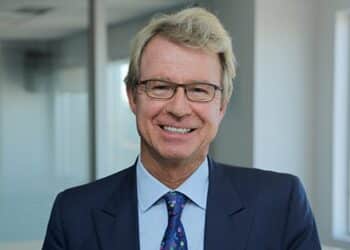Amid a “perfect storm” in global financial markets – with a weakening US dollar, elevated Treasury yields, and equities near record highs – the renewed violence in the Middle East has disrupted the narrative of US exceptionalism, raising questions about whether capital will begin flowing out of the US.
In a market note, Peter Smith, investment director at Federated Hermes, observed that unlike previous crises in the Middle East, this time, neither US Treasurys nor the dollar have strengthened – a break from historical norms.
He added that the simultaneous decline of both the US dollar (DXY) and US equities (S&P 500) is particularly unusual, signalling a potential erosion of investor confidence in US assets.
“We could make the argument that, after pouring trillions of dollars into US assets over the last five years, international investors are now starting to rebalance their portfolios,” Smith said.
“US equities have been volatile and demand for Treasurys has been weak, with at least some of those flows going into gold, which has continued to strengthen.”
For many investors, this latest dynamic will come as a surprise, he said, especially after many years during which the US equity market has enjoyed sustained growth – with the exception of the 2000 and 2008 bear markets and the brief COVID-19 dip.
“The story of US exceptionalism over the past two-plus decades has been writ large,” he said.
“It took until 2024, for instance, for Japan’s Nikkei index to finally surpass its 1989 high. In Europe, the Euro Stoxx 50 only reclaimed its dotcom era prior peak from spring 2000 this past winter. The MSCI All Country World Index ex-US recently broke out of a trading range that had held since 2007.
“No surprise, then, that US made up more than two-thirds (67.2 per cent) of the MSCI ACWI on December 24, 2024 (even as the country accounted for just 26.4 per cent of global nominal GDP).”
All of this suggests that if investors are rebalancing out of the US, there may still be some way to go, he noted.
“To our mind, the US dollar will likely need to come down further even if the US stock market does not,” Smith said.
Against this backdrop, he highlighted investors could do well to continue to consider opportunities ex-US.
“Europe, for example, has more monetary and fiscal stimulus levers to pull to generate economic growth,” the investment director said.
“This, coupled with more attractive valuations, improving earnings expectations and a weaker dollar, makes for a possible – and possibly seismic break from the past,” Smith added, adding that international equities look more attractive now than at any point over the last 10 years.
One by one, Australian superannuation funds have been stepping away from the US, with the Future Fund becoming the latest Aussie investor to acknowledge that the US has become “a more risky and uncertain investment destination”, one likely to see a smaller share of capital flows going forward.
In a recent speech, chair Greg Combet said the sovereign wealth fund has already taken steps to hedge against this volatility, including by increasing exposure to the euro and Japanese yen, adding commodities such as gold, building its domestic asset base, and paying closer attention to Europe and Japan.






